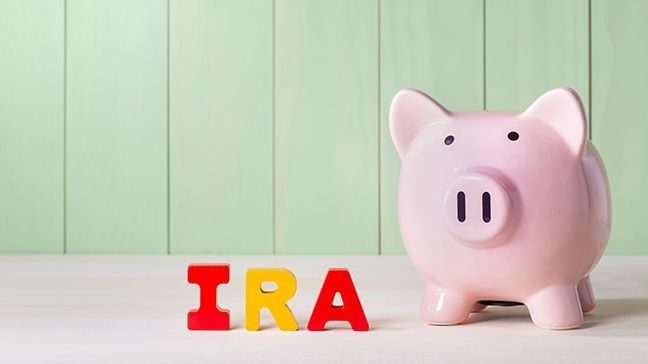Unfortunately, most of us in our 20s and 30s can’t rely on the government or a fixed pension to provide financial security when we grow older.
As a result, we face a sobering choice:
- Save — often and early so you can one day stop working because you have to and instead enjoy the freedom of living life on your terms, or:
- Work indefinitely — until we are too frail or sick to work anymore — and then live out our remaining years in relative poverty.
That’s harsh, I know, but it’s also a likely reality if you don’t save and Social Security cannot keep pace as retirees live longer and longer.
So, we should start saving. Read this if you’re completely new to retirement planning. (And don’t worry if you can’t afford much — even $50 a month makes a difference.)
If you have a job with benefits, your first step should be to call up your HR manager and ask if you have a 401(k) plan or similar retirement savings plan at work. If so, sign up to have a small amount saved from your paycheck each week.
If you don’t have a work-sponsored way to save, it’s time to open an individual retirement account, or IRA.
What’s Ahead:
What is an IRA?
An IRA is a specific kind of investment account that entitles the investor to certain tax breaks. The IRS grants these tax benefits to encourage Americans to save for retirement.
In exchange for the tax benefits, there are some restrictions on IRA accounts. For example:
- There are limits to how much money you can contribute to an IRA each year. In 2023, this is $6,500 for investors under the age of 50.
- There is a 10% penalty for withdrawing money from an IRA before you turn 59 1/2. (With a few rare exceptions.)
Other than that, anybody under age 70 ½ who is earning an income can open an IRA. To open an IRA, you need to make three decisions:
- Whether to open a traditional IRA or a Roth IRA.
- Which financial institution to use.
- Which investments to choose.
Let’s take a look at each of these decisions.
Traditional IRAs vs. Roth IRAs
There are two “flavors” of IRAs: Traditional and Roth. Both provide tax breaks to save for retirement, but they work differently.
With a traditional IRA, the money you deposit now is tax deductible. Earnings accumulate tax-free, but you pay ordinary income tax when you withdraw the money.
With a Roth IRA, you cannot deduct money that you deposit from your taxes now. Earnings accumulate tax-free and you withdraw the money tax-free in retirement.
Two other notable features of a Roth IRA are:
- You can withdraw money you saved in a Roth IRA anytime without penalty (but you cannot withdraw any earnings without penalty until retirement).
- Investors who earn more than a certain amount cannot take advantage of a Roth IRA without a Roth IRA conversion — a more sophisticated financial planning move.
Which kind of IRA should you open?
If you’re just starting out, don’t worry about choosing between a traditional IRA and a Roth IRA…just open one! You can:
- Open the other kind of IRA in a future year.
- Split money between more than one IRA as long as you do not exceed the annual limit. For example, you could put $3,250 into a traditional and $3,250 into a Roth to reach the annual limit of $6,500.
As far as choosing, my rule of thumb is this:
- If you think you’ll earn more money in retirement than now, contribute to a Roth IRA to reduce your tax liability when you’re older.
- If you think you’ll earn less money in retirement than now, contribute to a traditional IRA to save on your tax bill this year.
Choosing a financial institution for your IRA
Once you’ve decided whether a traditional IRA or Roth IRA is right for you, the next thing you need to figure out is where you will open your IRA. Almost every kind of financial institution offers IRAs:
- Banks and credit unions
- Investment accounts
- Mutual fund companies
- Even peer-to-peer lending sites (where you loan your money to other regular people and they pay you back with interest)
Which financial institution you choose for your IRA depends on how you want to invest your money.
Banks and credit unions
With some banks/credit unions you will be limited to investing in a savings account or certificate of deposit (CD), although some banks offer investment choices as well. Savings and CD accounts are good for stashing short-term savings like emergency funds or for retirees looking to guarantee they won’t lose money, but they don’t pay enough for younger investors to use them for retirement savings — over time, the interest rates on these accounts will not keep up with inflation.
Online brokers
You really can’t go wrong with an online broker because most don’t have minimum account balances and you can begin buying investments — stocks, bonds, mutual funds, or ETFs — for as little as $5 – $10 a trade. You can find my recommendations for investment accounts for young investors here.
Mutual fund companies
If you know you want to invest in mutual funds, opening an IRA directly with a mutual fund provider may save you money on trade commissions. Some potential downsides are:
- Minimum opening deposits of up to $2,000 or $3,000.
- You are limited to investing in that company’s mutual funds.
Alternative institutions
Some non-traditional institutions offer IRAs, too. I don’t recommend most new investors start saving for retirement with peer-to-peer lending, but Betterment is one example of a good alternative IRA. Betterment invests your money in a widely diversified portfolio of stocks and bonds that indexes the performance of the entire market. They have a $10 minimum deposit required to get started, low fees, and make automatic monthly or weekly investments easy. Read more about Betterment here.
Once you already have an IRA set up, another non-traditional institution you should check out is Blooom. They’ll manage your IRA for you and you can talk with a financial advisor if you have any questions.
While Blooom does come with a $120 yearly fee, that’s significantly cheaper than hiring a financial advisor. Plus, you can get an initial IRA analysis for free when you first sign-up.
Choosing your investments
If you open an IRA with Betterment, one advantage is that you don’t need to choose individual investments – you simply select how aggressive or conservative you want to be.
When you open an IRA at a broker or mutual fund company, however, you then need to choose how you’ll invest your money. If you open the account but do not select investments, your money will simply sit idle earning no interest (or a very small, less than 1%, annual interest rate).
Think of your IRA like a bucket
An IRA is like a bucket. The financial institution gives you the bucket when you open the account and tells you “this is a special bucket and any money you put into it will be protected from certain taxes”. It’s up to you, however, to decide what to put into the bucket.
You can simply deposit cash in a savings account, but it will only earn a very small interest rate, and that’s not very good for long-term appreciation.
Alternatively, you could put sketchy penny stocks or volatile IPO stocks into your bucket. That’s also not so good because those investments are so risky you stand to lose most of your deposit.
Instead, you want to put a diversified mix of stocks, bonds (and maybe some cash) into your bucket to create a so-called “balanced portfolio”. This means that you have a mix of investments that should appreciate over time but are diversified enough that you are as protected as possible from potential losses.
This is where most new investors get hung up — choosing from the tens of thousands of available investments is overwhelming to say the least!
Diving into choosing investments is the topic of posts like these on how mutual funds can help you start investing and getting started with exchange-traded funds. You can also read our list of the best mutual funds and ETFs for new investors.
If you decide you want to learn about funds before you invest, you can research funds a free Morningstar account — Morningstar is my go-to source for investment data and research.
Final points on how to open an IRA
The government could do a lot more to make it easier to save for retirement. Until that happens, IRAs are a great tool to save thousands on taxes as you stash money away for your future financial independence — you just need to get over the alphabet soup and pages of confusing rules.
But opening and putting money into an IRA is the easy(ish) part. If you’re just starting out as an investor there’s no better way to start than with an IRA. Choose a broker or other financial institution, fund your account, and select a few investments (stocks, mutual funds, or ETFs) and put your money to work. Your future self will thank you!





